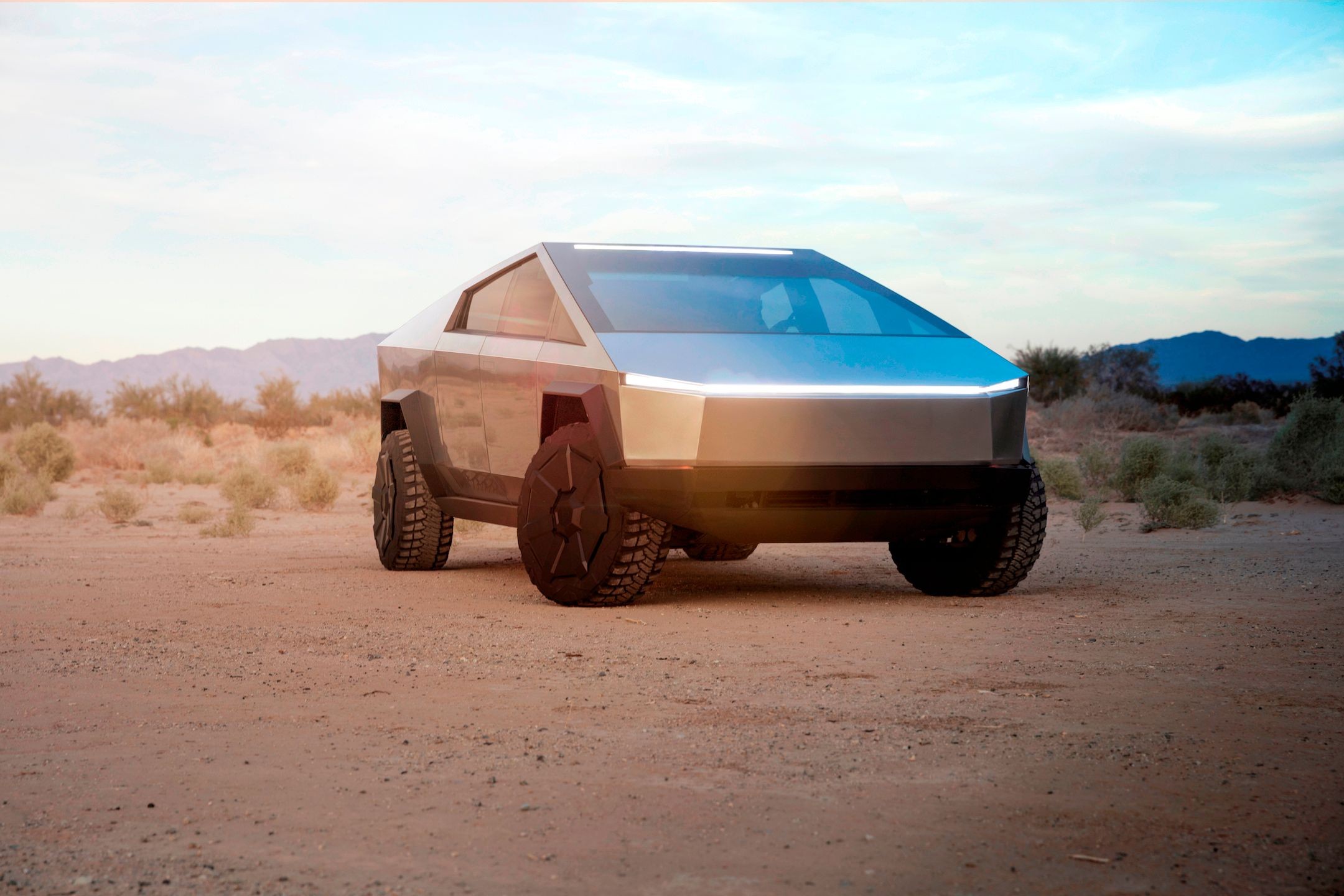The Tesla Cybertruck is finally hitting the streets after a lengthy four-year wait, yet the buzz around its release is accompanied by a significant debate: its polarizing design. While the electric truck has cultivated a dedicated fanbase, an equal number of critics find its sharp, angular aesthetic unappealing. Could a redesign with a more conventional approach bridge this divide and attract a wider audience?
Graphic artist Dejan Hristov, known for his innovative automotive concepts, has reimagined the Cybertruck, presenting a version that prioritizes softer lines and a more streamlined silhouette. This redesign aims to retain the futuristic essence of the Cybertruck while making it more palatable to a broader spectrum of tastes. Hristov’s concept introduces a less aggressive front fascia and smoother body panels, resulting in a design that appears notably more practical and refined, particularly in its side and rear profiles. One might even mistake it, at first glance, for the speculated Lucid pickup truck, a potential rival in the electric truck market.
Rethinking the Cybertruck’s Angular Aesthetics
Hristov’s redesign skillfully tones down the abrupt angles that define the original Cybertruck. By incorporating flush-fitted glass and carefully sculpted body panels, the reimagined truck adopts a more contemporary and less industrial appearance. The transformation moves it away from resembling a “mobile corrugated steel workshop,” as some critics have described the original, towards a design that integrates futuristic elements with familiar automotive cues.
 Dejan Hristov Cybertruck redesign front three quarter view, showcasing softer lines and a less angular front end.
Dejan Hristov Cybertruck redesign front three quarter view, showcasing softer lines and a less angular front end.
From a side perspective, the redesign takes on an almost sporty character. The vehicle’s stance is enhanced, lending the Cybertruck a more athletic and purposeful demeanor. This profile evokes a sense of robust capability, reminiscent of rally-inspired vehicles like the Mitsubishi Pajero Evolution, which conquered the challenging Dakar Rally. The rear of Hristov’s design arguably represents the most significant improvement.
A slender light bar elegantly wraps around the rear, contributing to a cleaner and more sophisticated look. The seamlessly integrated bumpers further enhance the neatness of the rear design, presenting a more cohesive and less utilitarian appearance than the production Cybertruck. Beyond purely visual enhancements, Hristov has incorporated functional upgrades such as a practical frunk drawer, offering a different approach to front trunk accessibility compared to the traditional design. An active rear spoiler is also included, suggesting potential aerodynamic benefits, alongside a discreetly integrated pop-up windscreen wiper, addressing a practical necessity with a touch of design flair.
Tesla’s Bold Design Choice: Breaking the Mold
Despite the potential appeal of a more conventionally styled Cybertruck, it’s crucial to acknowledge Tesla’s deliberate decision to maintain the radical, concept-like design. The automaker consciously chose to stay remarkably true to the original 2019 concept, prioritizing a groundbreaking aesthetic over mainstream acceptance.
Early sketches and alternative design paths for the Cybertruck hinted at sleeker, more conventional forms. However, Elon Musk, Tesla’s CEO, explicitly rejected the idea of a “boring truck.” Musk drew inspiration from science fiction movies and video games, aiming to create something genuinely unconventional and attention-grabbing. As Musk famously stated to his design team, he was determined to “build something that’s cool,” even at the risk of limited market appeal, emphasizing a desire to “break the mold” rather than conform to traditional truck design norms.
This audacious approach undoubtedly achieved its goal of generating massive media attention and sparking conversations. The Cybertruck’s unique and often divisive styling has been a key factor in its notoriety. While Hristov’s redesign offers a glimpse into a potentially more universally appealing Cybertruck, the original’s polarizing design is undeniably part of its brand identity and disruptive market strategy. Ultimately, while styling preferences remain subjective, and Tesla’s sales figures will be the ultimate verdict, Hristov’s redesign prompts a valuable discussion about the balance between groundbreaking design and broader market appeal in the electric vehicle landscape.
